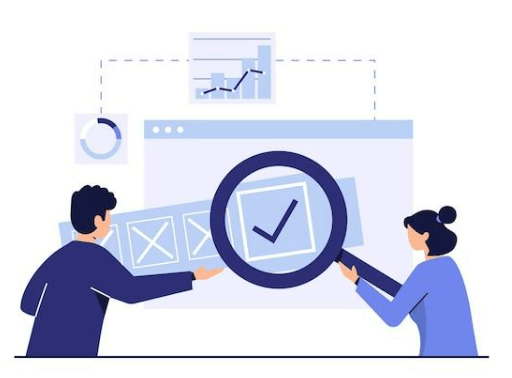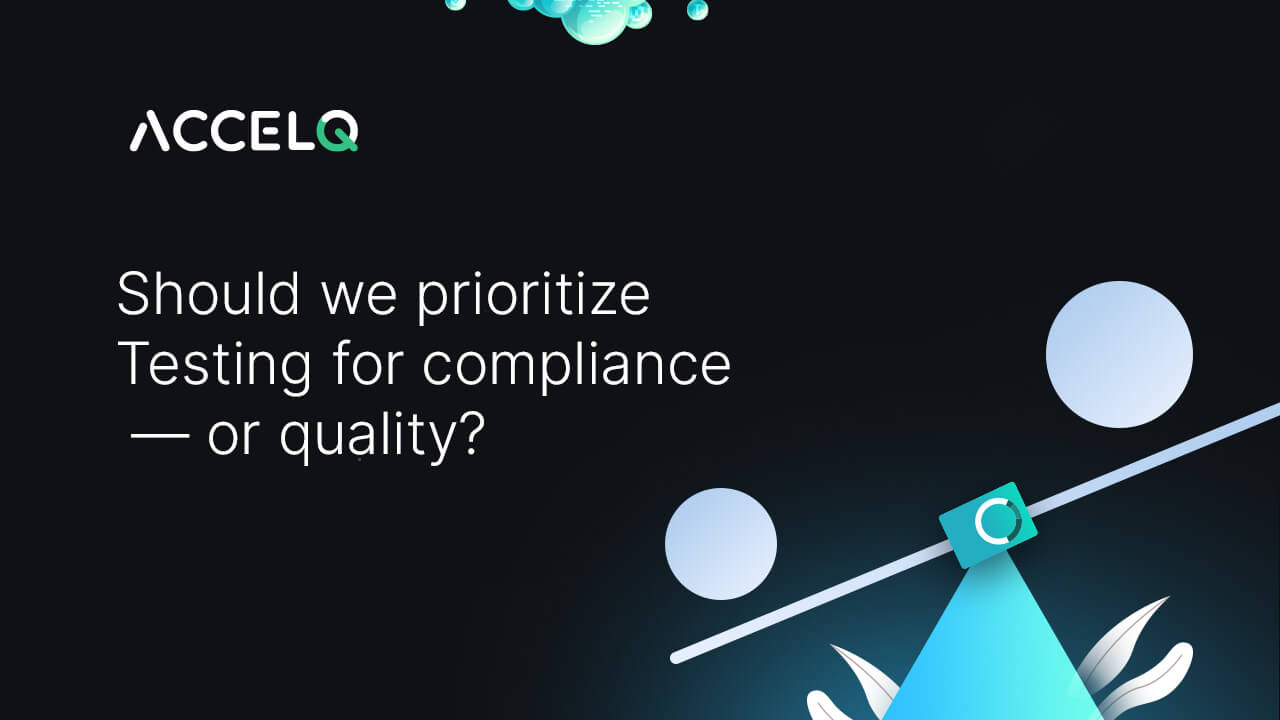Should We Prioritize Testing for Compliance – or Quality?

How do you define software testing? It is the process that ensures software products meet their client requirements and are free of any major defects (or bugs). So, by definition, the QA or testing process is all about checking if the developed software product conforms to defined requirements. Interestingly, we find that this definition does not include the term "quality." Mostly, software testing has focused on functional compliance – meaning if the software satisfies the customer's requirements.
What, then is testing for compliance?
In addition to that, we'll answer whether QA testing should be prioritized for quality or compliance. So let's start by defining these terms.
What Is Compliance Testing?
Compliance testing (or conformance testing) is the type of software testing that checks if a software product or system meets the defined set of internal and external standards. Some of the enforced industry standards include the World Wide Web Consortium (W3C) and Web Services Interoperability (WS-I).
Effectively, testing compliance is a non-functional technique in software testing for assessing the product against prescribed standards. Standards are of the following two types:
- Internal standards: These are defined by the software company. For example, a web development company can state that all web pages and applications must have a responsive design.
- External standards: These are typically industry standards (or regulations) external to the software company. For example, industry standards like SOC2 and GDPR.
Compliance testing effectively checks if the software product meets compliance-related requirements at every stage of the software development lifecycle (SDLC). This form of testing can also serve as a prerequisite for quality testing.
Here's a basic stepwise framework for performing compliance testing:
- Understand the business requirements of the organization.
- Assess the company infrastructure for any security risks or vulnerable areas.
- Design a compliance testing system customized to organizational needs. This determines the frequency required to perform the compliance tests.
- Perform compliance testing and address any issues quickly.
- Check if the security measures conform to compliance requirements.
Next, let's define quality testing.
What Is Quality Testing?

Also referred to as quality assurance (QA), quality testing is the technique that ensures that companies deliver products of the highest quality. Essentially, the term "quality" is based on the following 4 dimensions:
- Benefits – checking how the product benefits its users and solves their business problems.
- Functions – checking if the software product performs its primary function (for example, making online purchases).
- Process – checking how easy (or difficult) it is for users to perform the various product-related functions.
- Experience – checking the user’s overall experience when using the product. For example, does regular use create a feeling of satisfaction or frustration?
Primarily, it involves checking the functional requirements of any product (for example, product features and benefits). Besides that, it can include non-functional requirements such as security features, performance, and response time.
Quality testing is much more than simply fixing software bugs and issues. It also addresses usability or non-technical issues in the product. Quality testing comprises four essential steps, namely:
- Planning: At this stage, the organization plans and establishes its process-related objectives along with the testing processes required to deliver a high-quality product.
- Implementing: The second step involves the actual implementation of the test process along with its necessary changes.
- Checking: This step involves monitoring and modifying the processes – and checking if they meet the predefined testing objectives.
- Acting: In the last step, the QA or testing team implements actions necessary to improve the testing process.
Next, let's compare Compliance with Quality testing.
Compliance vs. Quality Testing
Overall, compliance testing focuses on satisfying the industry requirements, while quality testing is all about delivering benefits to the end user. Ideally, every product that conforms to requirements must deliver user benefits. However, this is hardly the case in the real world.
For instance, the user's actions also determine if the product can benefit them. The user's actions, in turn, depend on how user-friendly the product is and how easily it can perform the required functions. For example, a product without an intuitive interface is difficult to use, even for experienced users.
So, should we prioritize compliance testing over quality testing – or are both essential for a high-quality product? In essence, both these techniques are necessary but require different mindsets.
Compliance testing involves:
- Reading and understanding the software requirements
- Visualizing what could go wrong with the software product
- Designing test environments where the software is most likely to fail
Additionally, management teams must ensure that development and QA teams possess a clear understanding of the defined standards and procedures through adequate training. Besides, compliance testing should begin right from the inception of the project instead of at a later stage.
On the other hand, quality testing involves:
- Understanding what the end user wants to achieve by using this product
- Visualizing every action, they are likely to perform
- Analyzing how the software must respond to each action
- Testing these user actions on the product
Overall, compliance testing reduces the risk of product failure, while quality testing improves the chances of delivering a successful product.
Why Choose ACCELQ for Software Testing
As software products gain more acceptance, complete testing is necessary to deliver high-quality products in a competitive market. A codeless test automation platform like ACCELQ can automate the overall testing process while reducing human efforts and errors.
Be it quality or compliance testing, the ACCELQ test automation platform delivers the following capabilities:
- A modular and design-first approach in the development of test assets
- A comprehensive testing approach that is not limited to writing test logic with a design interface
- Accessibility to test assets without any strict language semantics
- Natural language abstraction ensures no vendor lock-ins
- Consistent extension capabilities based on a simple annotation system
Our professional team of QA experts can understand your testing requirements and guide you with the right solution for your business needs. Interested in learning more? Contact our QA consultants today.
Related Posts
 Extending Test Coverage for Mobile and API
Extending Test Coverage for Mobile and API
Extending Test Coverage for Mobile and API
 From Bugs to Glory: The Exciting Story Behind World Tester’s Day
From Bugs to Glory: The Exciting Story Behind World Tester’s Day



































